Censorship in Nepal has been employed for political reasons at various points in history.
In February, an obscure Hindu right-wing group, Shiksha Bachao Andolan, forced Penguin India to withdraw American Indologist Wendy Doniger’s book, The Hindus: An Alternative History. Surely, if — as the group claimed — the religious sentiment of Hindus in India were hurt, religious sentiments of Hindus in Nepal must have undergone a similar injury. Yet it was not surprising to find that this story about “Hindu-bashing” and the book’s censorship received little traction in the Nepali press.
This was not the first time. In 2003, Shiv Sena and Bajranj Dal, hard-line Hindu groups in India, burnt copies of Claire Marie Bailey and Jack Bailey’s book, Dairy of a Tantric Priestess, claiming it insulted Hindu and Buddhist religious sensibilities. Nepal, a Hindu state till 2006, reacted with matured indifference.
This difference in reaction to perceived insults to religious sentiments in the two Hindu-majority countries reveals much about the nature of censorship in Nepal, and the politics that guides it. Apathy to the above examples masks Nepal’s haunting legacy of censorship, employed to maintain structures of domination and punish nonconformity. The history of censorship in Nepal exposes how its nature has evolved: from the marginalization of communities from access to religious education, to using it as a tool of foreign policy, and to ensuring state security and regime stability. Nepal’s transition to democracy, too, has come with its own rationale for censorship.
A Society Divided
Nepal is a society divided by a hierarchical caste system, where knowledge, in particular manifestations, was revered by all but kept out of reach from most. Access to ideas was restricted through a regulation of behaviour, often sanctioned by the state.
The social hierarchy places the scholars, Brahmins, highest on the caste ladder. They justified their control over production and distribution of religious knowledge by a “divine mandate.” Non-Brahmins, except the Kshatriyas (the martial caste), were barred from studying Sanskrit.
While this anachronistic system has undergone profound reforms since Nepal opened up to modernity in the 1950s, the legacy of discrimination continues to manifest itself through the disproportionate access to resources. The caste Hindu elites, especially those from the hills, have a dominating presence in politics, bureaucracy and military.
While the desecration of even a single book is a matter of grave concern, the burning of an entire repository of ancient knowledge cannot be condoned on the justification of historical injustices.
Nepal first experimented with democracy in the 1950s. By 1960, King Mahendra, accusing the democratic government of incompetence and corruption, used his emergency power to take charge of the state, dissolved all political parties, and curtailed political and civil liberties. By 1962, Mahendra had instituted the Panchayat system — a partyless democracy where the military and bureaucracy worked under the guardianship of the absolute monarch. The Panchayat system tried to create a common sense of “Nepaliness” among a diverse population. This was to be achieved through an allegiance to the crown, the encouragement of Khas bhasa — the language of the dominant community, Hindu religion and one national dress.
An allegiance to the crown meant that excessive criticism and political activities against the state or king would be punished. Press freedom was curtailed, and propaganda tools were put in place to ensure government-tailored news reached the masses. Even Nepali academics, especially those in social sciences, were restricted from engaging in studies about ethnicity that could harm the inter-community relations and state security.
In 1990, the people of Nepal overthrew the Panchayat system through a Jan Andolan (People’s Movement). Yet the entrenched system of feudalism, caste and ethnic hierarchy, and monarchy continued to persist. Taking political advantage of these frustrations the United Communist Party of Nepal (Maoist), in 1996, began an armed struggle to overthrow the state. The civil war lasted for over a decade, leaving between 12,000-15,000 people dead.
In 2002, All Nepal Independent Student Union, a Maoist group, bombed Mahendra Sanskrit University, the only Sanskrit university in Nepal — 50,000 rare and ancient Sanskrit books were destroyed in the process. Bombing this university was not an act of wanton terrorism, it was specifically chosen for the symbolism. Sanskrit has always been a language of power — used by the dominant and denied to the dominated. The destruction of Sanskrit was an act of catharsis. While the desecration of even a single book is a matter of grave concern, the burning of an entire repository of ancient knowledge cannot be condoned on the justification of historical injustices. Yet considering them allows us to be thoughtful in our assessment.
Since the Jan Andolan II (Second People’s Movement in 2006), conscious attempts have been made to ensure that all forms of censorship based of caste and ethnicity are eliminated. The interim constitution acknowledges historic discrimination, and recognizes Nepal as a multi-cultural society. However, the lack of quality education continues to haunt the developmental aspiration of Nepal. There is also a growing gap between those with access to global knowledge and those who have none, especially when knowledge production happens in English.
Censorship as a Tool of Foreign Policy
The cliché that continues to guide Nepal’s foreign policy was uttered by King Prithivi Narayan Shah in the late 18th century. Recognizing the domineering presence of its neighbours, India and China, he romantically described Nepal as a “yam between two rocks.” A hallmark of Nepal’s geopolitics is its ability to manage the interests of both its giant neighbors, while also maintaining a sense national integrity.
Movies and songs with reference to India’s encroachment — political and geographical — into Nepal are not given the necessary certification for public screening by the Nepali Film Censor Board. This year, the Board refused PG certification to Bhimdutta, a movie based on the life of revolutionary leader Bhimdutta Pant, who, it is believed, was murdered in a joint operation between the Nepali and Indian armies. The clearance certification was issued after producers removed references to India.
According to the Motion Picture (Production, Exhibition and Distribution) Act, the film censor board cannot permit the screening of motion pictures that “may jeopardize the security, peace and order of Nepal or harm the harmonious relation subsisting with the foreign states [emphasis added] or the peoples of various castes or tribes or which may cause negative impact to the public interest or descent behavior or morality or defame any person or contempt of court or incitement to any offence.” With such a vague list it is not surprising to find the Censor Board take offense at the slightest provocation in a desperate bid to stay relevant.
In 2009, the Home Ministry asked the police to stop screening Greater Nepal: Search for Frontier because they claimed the film was ultra-nationalist and anti-India. Another picture, Dasgajja, critical of India’s encroachment into Nepali territory, was asked to cut a number of references to the regional power.
Similarly, China’s interests too have been cared for, even at the expense of freedom of expression in Nepal. Nepal, a haven for Tibetan refugees, suppresses anti-China protests with paranoid swiftness. Given its “One China policy,” it is no coincidence that the once ubiquitous Free Tibet merchandise (flags, posters, stickers and banners) are no more to be found in Kathmandu book stores.
Justifications for Censorship in Nepal
Interestingly, the Nepali state has not been too eager about “official” censorship, so in a perverse delegation of responsibility it relies on self-censorship by publishers who do not want to risk losses. Another non-official way of banning books in Nepal is through India. For example, Salman Rushdie’s The Satanic Verses and Taslima Nasrin’s Lajja are wholly or partially banned in India, so by proxy they are also unavailable in Nepal, which receives most of its books through publishing houses in India.
During the Panchayat, issues of Newsweek and Time magazine that were critical of the government were banned at customs, as was Marxist literature. This policy was repeated during the civil war when films sympathetic to the Maoists were barred from screening.
The justification for such censorship can be found in Nepal’s (interim) constitution itself. While the constitution provides every citizen with the freedom of opinion and expression, the list of “reasonable restrictions” is so long and flexible that freedom becomes meritless.
Consideration of state security has been a major justification for limiting freedom of expression. Kunda Dixit, a senior journalist, in an interview to Colombia Journalism Review remembered: “For the first two weeks (after the royal coup in 2005) there were actual soldiers in the news room with guns, especially in radio stations, TV stations, Internet service providers and the daily newspapers.” During emergencies, like those in 2002 and 2005, the government also provided media outlets with guidelines on reporting.
In a country with a high literacy rate — 57.5% in 2011, according to the World Bank — radio stations, especially those outside the capital city, Kathmandu, were priority targets. In its 2014 report, Freedom House, the world’s leading independent watchdog organization, rated Nepal “partially free” with a score of 55 on a scale of zero to 100 (100 being the worst). The ratings were partially based on Nepal’s horrendous record of violence against journalists and the impunity that follows. The score improved three points to 58 in 2013.
In 2012, when Manish Harijan, a young painter, was stopped from exhibiting his paintings of Hindu and Buddhist deities dressed as superheroes at Kathmandu’s premier art gallery, Siddharth Art Gallery, Kathmandu liberals were caught off guard. When activists from Vishwa Hindu Parishad-Nepal (VHP), a Hindu organization, protested over paintings that hurt Hindu sentiments, there was a realization that the nature of censorship has begun to change.
Unlike autocratic governments, the power to censor in a democracy, or at least appeal for it, rests with individuals and groups, along with the state. With democratic politics comes identity- or community-based voting where issues of communal harmony have to be tackled with sensitivity. Ensuring freedom of expression and dissent to all is a balancing act yet to be mastered by Nepal.
Censorship in Nepal was employed at various points of its history for different political purposes. The justification and form of censorship has evolved along with the change in Nepal’s system of government from an absolute monarchy to a democratic republic. In democratic Nepal, freedom of expression continues to be limited by its history, geopolitical necessity and internal pressures. How well it manages inter-communal harmony while guaranteeing freedom of expression is a story yet to unfold.
The views expressed in this article are the author’s own and do not necessarily reflect Fair Observer’s editorial policy.
Support Fair Observer
We rely on your support for our independence, diversity and quality.
For more than 10 years, Fair Observer has been free, fair and independent. No billionaire owns us, no advertisers control us. We are a reader-supported nonprofit. Unlike many other publications, we keep our content free for readers regardless of where they live or whether they can afford to pay. We have no paywalls and no ads.
In the post-truth era of fake news, echo chambers and filter bubbles, we publish a plurality of perspectives from around the world. Anyone can publish with us, but everyone goes through a rigorous editorial process. So, you get fact-checked, well-reasoned content instead of noise.
We publish 3,000+ voices from 90+ countries. We also conduct education and training programs
on subjects ranging from digital media and journalism to writing and critical thinking. This
doesn’t come cheap. Servers, editors, trainers and web developers cost
money.
Please consider supporting us on a regular basis as a recurring donor or a
sustaining member.
Will you support FO’s journalism?
We rely on your support for our independence, diversity and quality.





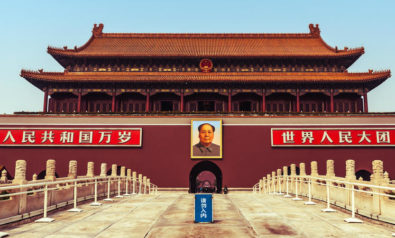

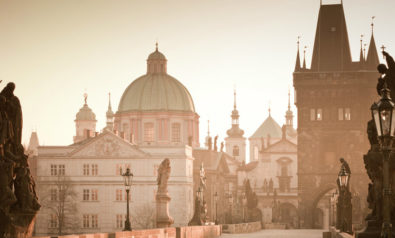




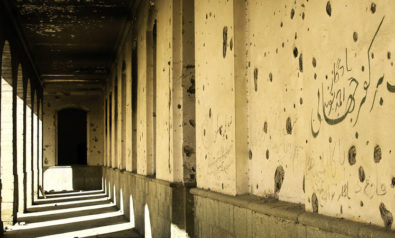

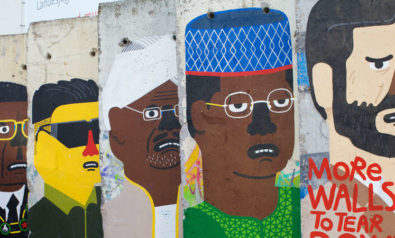
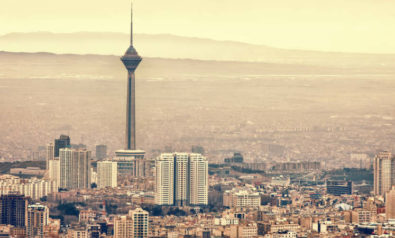

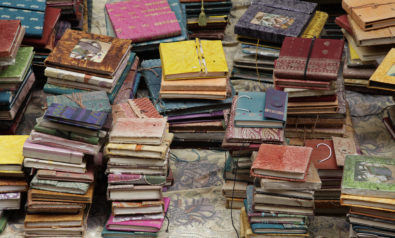
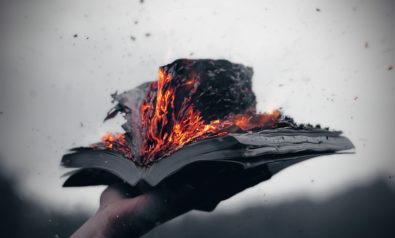


Comment